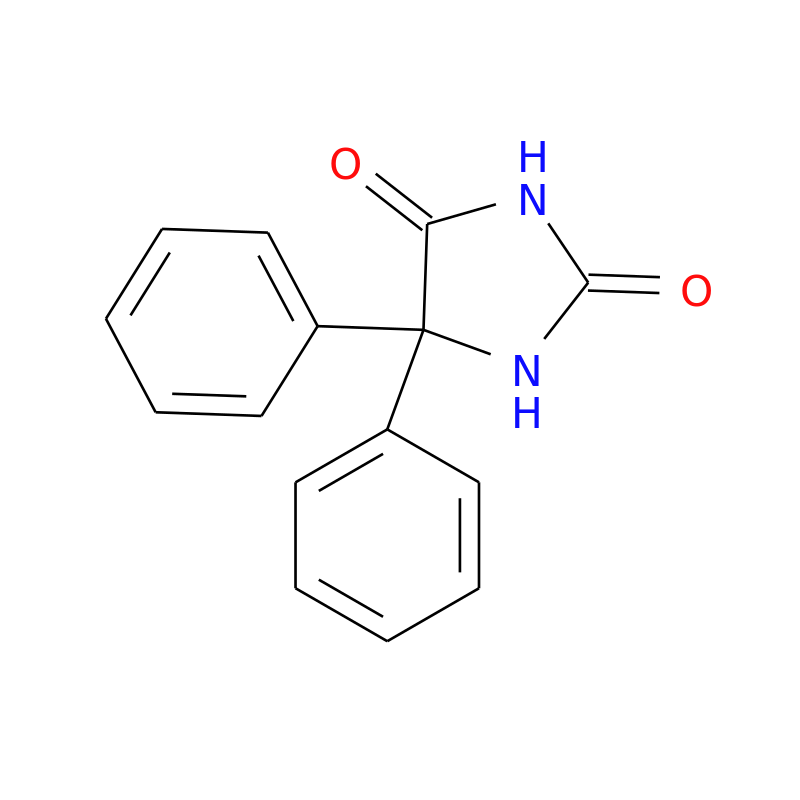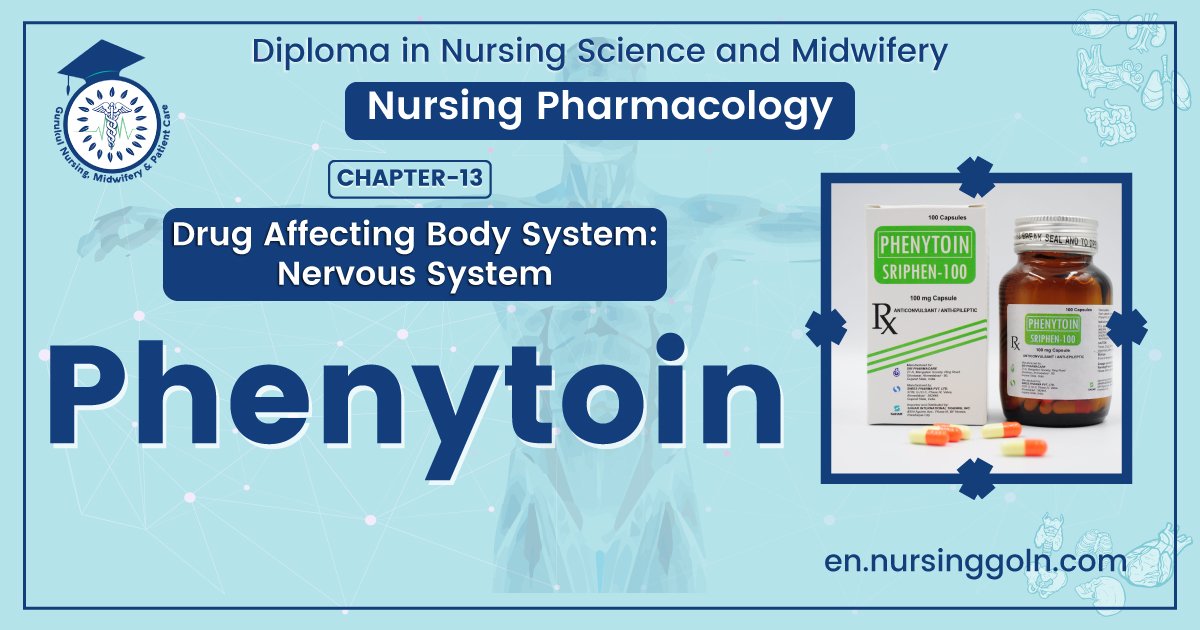Concept About Phenytoin – This book covers the entire syllabus of “Pharmacology” prescribed by BNMC- for diploma in nursing science & midwifery students. We tried to accommodate the latest information and topics. This book is an examination setup according to the teachers’ lectures and examination questions.
At the end of the book, previous questions are given. We hope in touch with the book students’ knowledge will be upgraded and flourish. The unique way of presentation may make your reading of the book a pleasurable experience.

Concept About Phenytoin
Phenytoin is the oldest non-sedative anti-epileptic drug. Phenytoin is the drug of first choice against generalized and partial seizures. Large therapeutic index than any other anti-epileptic drugs.
Mechanism of action of Phenytoin
Anti-epileptic effect of Phenytoin is related to the movement of ions, e.g. Na and Ca++ through the cell membranes.
1. Membrane stabilizing effect: Phenytoin binds to both open & inactivated Nat channel This binding of phenytoin to Nat channels causes decrease Na influx into nerveendings.
2. Phenytoin inhibits Ca++ influx across the cell membrane and thus inhibits various calcium induced secretory process, including release of hormones & neurotransmitters. As a result
3. Phenytoin causes neural stabilization: Hyperpolarization > increase refractory period > reduce repetitive firing.
4. Phenytoin inhibits the development and spread of Seizure activity from the primary focus.
Phenytoin
↓
Binds with inactivated Na+ channels.
↓
Decrease Na+ conductance
↓
Blocks sustained high frequency repetitive firing of action potential.
↓
Anti-epileptic action (no convulsion)
Pharmacokinetic properties of phenytoin:
1. Route of administration: Oral. Parenteral.
2. Absorption: Slowly absorbed.
3. Distribution: 80-90% bound to albumin
4. Plasma half-life: 10-5 h (low dose), >60 h (high dose)
5. Metabolism: Liver (MFO and glucoronysation)
6. Excretion: Bile (at first), urine
Phenytoin at low doses shows first order kinetics but over the therapeutic plasma concentration shows saturation or zero-order kinetics.
Phenytoin is a potent enzyme inducer. So increases the metabolism of the drugs. First order kinetics: It means metabolism increase in proportion the rise in the free drug concentration. Zero order kinetics: It means over the therapeutic plasma conc. range the rate of metabolism does not increase in proportion to the plasma concentration (i,e, enzyme saturation).
Indication of Phenytoin
1. Epilepsy
2. Trigeminal neuralgia
3. Cardiac arhythmia
Contraindication of phenytoin
1. Hepatitis
2. Pregnancy
3. History of hypersensitivity
4. Convulsion resulting from fever.
Adverse effect of Phenytoin
| 1. Dose related: (CNS toxicity |
|
| 2. Idiosyncratic reaction: (non- dose related) |
|
| 3. Teratogenecity: |
|
| 4. Others (Ch. administration of phenytoin) |
|
Hazards of long-term use of phenytoin:
Toxic effects associated with chronic medication are as follows:
1. Cerebello-vestibular effects:
- Nystagmus
- Ataxia
- Diplopia
- Vertigo
2. Behavioral changes:
- Hyperactivity
- Silliness
- Confusion
- Dullness
- Drowsiness
3. Increased frequency of seizures.

4. Gastrointestinal symptoms
- Nausea.
- Vomiting
- Epigastric pain
5. Gingival (gum) hyperplasia.
6. Osteomalacia
7. Megaloblastic anaemia.
8. Hirsutism (young female)
Drug interactions of Phenytoin
| Interaction | Possible cause |
| Phenytoin + OCP Break through bleeding | Phenytoin increase OCP metabolism as it is a potent enzyme inducer |
| Phenytoin + Anticoagulant decrease anticoagulant effect | Phenytoin increase anti-coagulant metabolism |
Sodium Valproate
Adverse effect of sodium valproate
1. Routes of administration; oral, well absorbed. Plasma half-life: 13 hours.
2. Distribution: 90% bound with albumin Metabolism: Liver.
3. Excretion: Urine.
4. Successful in infantile epilepsy.
5. Low toxicity
6. Lack of sedative action.

Mechanism of action of sodium valproate
1. Valproate Sodium is the sodium salt form of valproic acid with anti-epileptic activity. Valproate sodium is converted into its active form, valproate ion, in blood.
2. Although the mechanism of action remains to be elucidated, valproate sodium increases concentrations of gamma-aminobutyric acid (GABA) in the brain, probably due to inhibition of the enzymes responsible for the catabolism of GABA.
3. This potentiates the synaptic actions of GABA. Valproate sodium may also affect potassium channels, thereby creating a direct membrane-stabilizing effect.
Adverse effect of sodium valproate
1. Teratogenicity (spina bifida)
2. Hepatotoxicity
3. Baldness
4. Coagulation disorder
5. Increase appetite and alertness
6. Pancreatitis.
Management of status epilepticus
Status epilepticus may be defined as repetitive attack of seizure without regaining consciousness in between. Status epilepticus is a medical emergency.
Management includes:
1. Keep the airway patent and 02 inhalation.
2. Wooden mouth gags, tongue forceps to prevent tongue bite (never give your finger).
3. Inj. Diazepam: 10 mg i/v stat, then continuous infusion (200 mg/l- fluid over 24 hours).
4. Inj. Phenytoin i/v. (Diazepam i/v followed at once by phenytoin i/v to avoid relapse because duration of anti-convulsant effect of diazepam is short).
Read more:
